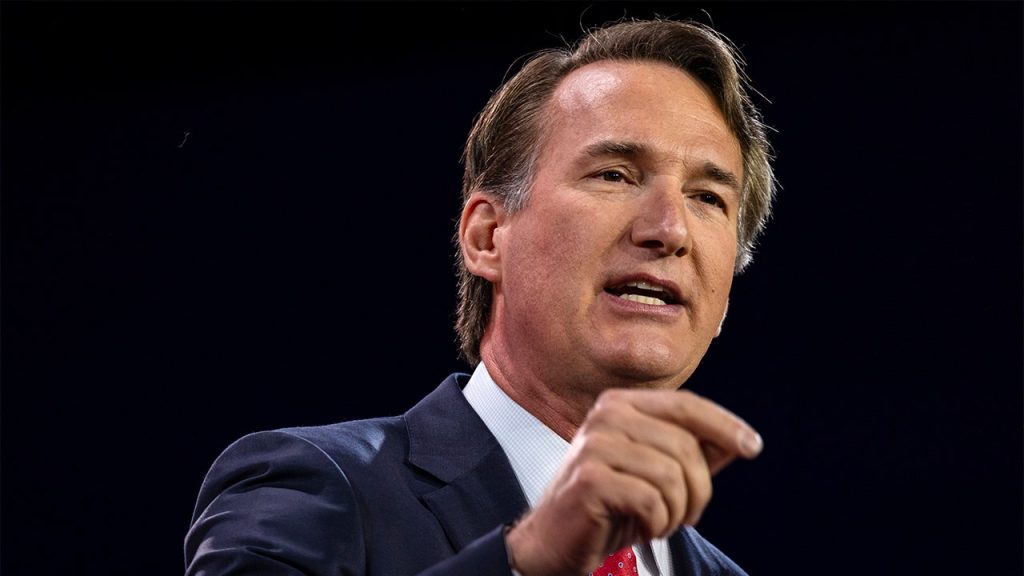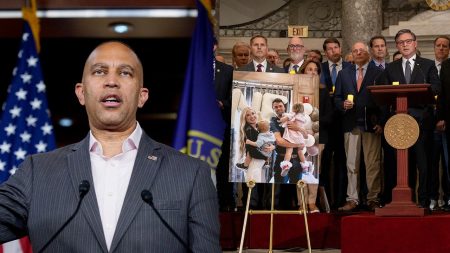A federal appeals court ruled in favor of reinstating some 1,600 Virginia voters with questionable citizenship status to the rolls while the state’s governor, Glenn Youngkin, vows to appeal the decision to the U.S. Supreme Court. The governor had issued an executive order directing state officials to identify noncitizens, who were given a two-week period to dispute being disqualified before being removed from voter rolls. Youngkin’s attorneys argued that the law only applies to actual voters and that removing noncitizens is not covered, but the appeals court disagreed, stating that the state was mixing various parts of the law together.
Youngkin expressed his disapproval of the ruling by stating that noncitizens should not be allowed on voter rolls and thanked Virginia Attorney General Jason Miyares for filing an emergency appeal with the U.S. Supreme Court. The ruling to reinstate the voters came after U.S. Judge Patricia Giles issued a preliminary injunction, finding that the removals from the voter rolls had been systematic rather than individualized, which violated federal law. The Justice Department had filed a lawsuit against the State of Virginia, Virginia State Board of Elections, and Virginia Commissioner of Elections, claiming that the removal of voters too close to the general election violated the National Voter Registration Act of 1993.
Youngkin criticized the judge’s decision, pointing out that the ruling came shortly before a Presidential election, reinstating over 1,500 individuals who had self-identified as noncitizens back onto the voter rolls. These individuals had previously presented immigration documents confirming their noncitizen status, which had been verified by federal authorities. If the case is taken up by the U.S. Supreme Court, it would happen just days before the election, adding further contention to the already controversial issue. Despite the legal challenges, the ruling stands, allowing the 1,600 Virginia voters in question to participate in the upcoming election.
The legal battle between the state of Virginia and the federal government highlights the complexities surrounding voter eligibility and the maintenance of accurate voter rolls. The conflicting interpretations of the law by state officials and the judiciary underscore the need for clear guidelines and procedures to prevent voter disenfranchisement while ensuring the integrity of the voting process. The appeal to the U.S. Supreme Court by Governor Youngkin reflects the high stakes involved in the case, as the outcome could potentially impact the results of the upcoming election and set a precedent for future voting rights disputes.
The decision by the federal appeals court revealed a divergence of opinion between state and federal authorities regarding the handling of voter registration and the removal of noncitizens from voter rolls. The legal wrangling over the issue underscores the challenges faced by election officials in maintaining accurate records and upholding the rights of eligible voters while preventing unauthorized individuals from casting ballots. The involvement of the Justice Department in the case further emphasizes the importance of federal oversight in ensuring compliance with national voting laws and protecting the democratic process from exploitation or manipulation.
The controversy surrounding the reinstatement of the 1,600 Virginia voters raises questions about the impact of legal decisions on the electoral process and the potential consequences for the integrity of elections. The intervention of the U.S. Supreme Court in the case could have far-reaching implications for voter registration practices and the enforcement of laws governing eligibility to vote. The outcome of the legal battle may shape future policies and procedures related to voter rolls and eligibility verification, with implications for elections at the state and national levels. The ongoing dispute underscores the complexities of election administration and the need for a clear and consistent framework to ensure fair and transparent voting procedures.













